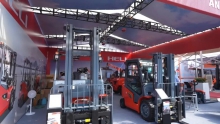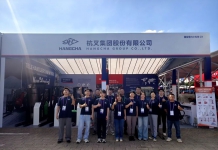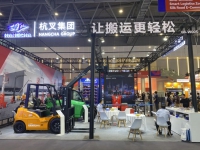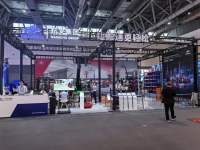Tax incentives and technology advancements gave members of the Industrial Truck Association a reason to be optimis...
Tax incentives and technology advancements gave members of the Industrial Truck Association a reason to be optimistic about the future.
Energy storage systems were the hot topic at the Industrial Truck Association’sfall meeting held in Scottsdale, Ariz., last week. It’s not only a topic for ITA, but the name of this organization’s newest subcommittee. Proof of its popularity among ITA’s supplier members was the overflow attendance at the subcommittee’s session. There was good reason.
The same day this subcommittee met to discuss the challenges and opportunities for applying fuel cells in lift trucks, the U.S. Fuel Cell Council was applauding the House of Representatives approval of the bailout package they say will save the U.S. economy. A portion of the bailout affects both fuel cell and lift truck makers directly. It grants an eight-year extension of the Investment Tax Credit for exploring and adopting environmentally sustainable power sources, including fuel cell technology.
“With reliable, long-term incentives now in place, we are confident our manufactures will see an increase in demand for their products,” said Robert Rose, executive director of the U.S. Fuel Cell Council. “In addition to helping stimulate the creation of more green-collar jobs, these incentives will allow more businesses to purchase clean, efficient technologies that will help them lower greenhouse gas emissions.”
Earlier this year, supplier members of the ITA were surveyed about fuel cells and other green technologies making their way into products. Most members didn’t think fuel cells would be adopted by more than 20% of the market within two years. However between two and five years, with the current energy situation, most expected fuel cells to be more popular in every lift truck category. The tax credit extension, plus some $28 million in R&D funding being made available through the Dept. of Energy, may put fuel cells on a faster development track.
John Christensen, a guest speaker at ITA’s meeting, is a subcontractor to National Renewable Energy Laboratory, part of the Dept. of Energy. He told Modern that lift trucks are among the early adopters that will drive wider acceptance of fuel cells.
“Down the road if there is a hydrogen economy and reduction in greenhouse gases becomes reality, people may look back and say the key were the early adopters that proved the reliability and grew the domestic supply chain of fuel cell manufacturers,” he said. “Early markets are the key because right now vehicles are too expensive.”
The DOE’s goal is to get cost down to $30 per kilowatt. That’s equivalent to the cost associated with a car’s internal combustion engine. The cost of fuel cells has gone from a high of $170 per kilowatt in 2002 to $130 in 2006. Christensen says the technology could reach that $30 mark by 2015.
Lift truck OEMs are also working on reducing costs—their own and customers. That was evident as members further dissected the results of the ITA’s annual Business Trends Survey. Dirk von Holt of Superior Signals noted that ITA member companies are using more domestic suppliers.
“With transportation and fuel costs, manufacturers are now more comfortable with local suppliers,” he said. “They can deal in the same time zone with companies and have smaller quantities delivered just in time with the flexibility and support to accommodate changing production schedules. The current economic trends will continue to drive OEMs to local sources.”
Survey results indicated that cost savings and energy and environmental efficiencies will be high priorities in new lift truck designs. For example, within five years more trucks will be regenerating energy when lowering loads and braking. The industry will also go more toward environmentally friendly hydraulic fluids. And regarding alternative power sources, fuel cells aren’t the only technology on a growth trend. ITA members see significant possibilities in natural gas as well as hybrid technologies, and on the electric side, look for advances in opportunity charging and fast charging to make these options more attractive.















 粤公网安备 44010602003952号
粤公网安备 44010602003952号